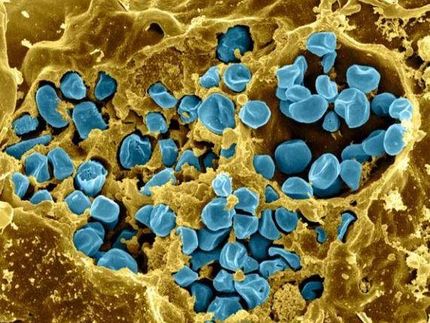Microbiome of the nose: removing iron from multi-resistant germs
Whether dangerous staphylococci survive in the nose depends on what other bacteria are present - and how they obtain iron.
Advertisement
A research team led by Simon Heilbronner, Professor of microbiology at the LMU Biocenter, has investigated how different bacteria that can colonize the nasal cavity deal with the iron deficiency there and interact with each other. The results of the study, which was recently published in the ISME Journal, show that the composition of the microbiome influences how well multi-resistant staphylococci can thrive in the nose. This opens up possibilities for the targeted suppression of potentially dangerous germs via nasal probiotics that do not require the use of antibiotics.
We share our bodies with countless microorganisms. They inhabit our gut, skin and orifices such as the mouth and nose. The composition of this microbiome has a major influence on our health. While certain germs can be beneficial, others cause us harm. Staphylococcus aureus is a case in point: "Antibiotic-resistant staphylococci can hide unnoticed in the microbiome of healthy people," explains Simon Heilbronner. This is the case for a third of all people. As long as they remain in the nose, we don't notice anything. However, if they enter the bloodstream after a surgical procedure, for example, they can cause serious illnesses. These infections are acutely life-threatening, and resistance is also developing to emergency reserve antibiotics. The problem of multi-resistant hospital germs is increasingly becoming a global health crisis. Ensuring that none of these dangerous pathogens are living in the nose before a hospital stay can save patients' lives.
Nasal habitat
Why Staphylococcus aureus is found in some noses but not in others is still poorly understood. "We know surprisingly little about the factors that determine whether a person can be inhabited by S. aureus," says Heilbronner. The genetics of the host and the environmental conditions only have a moderate influence on this. "Instead, it is becoming increasingly clear that the presence of certain other bacteria can favor or hinder the growth of the pathogen." However, because the microbial ecosystem of the nose has been little researched overall, far too little is known to sufficiently understand the mechanisms behind it.
For the new study, Heilbronner and his colleagues therefore examined 94 strains from eleven bacterial genera that occur in the human nose. The focus was on a very special characteristic of the microbes. "There is an acute iron deficiency in the nose," says Heilbronner. By limiting this essential nutrient, the human immune system protects itself from unwanted guests. Bacteria that still want to survive in the nose therefore have to come up with something: they produce so-called siderophores - iron-binding molecules that they release into their environment. "You can think of them as molecular fishing nets that the bacteria throw out to collect iron," says the infection biologist. As soon as the siderophores are enriched with the coveted trace element, they are taken up again. However, not always by the bacterium that produced them.
The battle for iron
As the researchers discovered, there is a complex network of trading alliances and raids for iron in our noses. They were able to identify various forms of interaction between the bacteria studied. Some of the microorganisms share their siderophores and the iron bound in them like a common good with S. aureus. They therefore work together with the pathogen, which benefits both species. In contrast, other bacteria behave less socially. There are species that make use of the siderophores of S. aureus, but withhold their own by molecularly encoding them. The authors refer to this strategy as "locking away" the iron. And then there are the pirates among the nasal germs: they do not produce their own siderophores at all - because this is time-consuming and cost-intensive - but only steal foreign sources of iron. Many of these "impostors" specialize in the siderophores of the pathogen.
Heilbronner and his team were able to prove that S. aureus is inhibited in its growth if bacteria are present in the environment that exploit its siderophores without giving anything back in return. "In this work, we have identified several strains of different species and genera that interact with S. aureus in different ways," Heilbronner comments on the results. "The results suggest that neighboring bacteria can create a hostile environment for staphylococci by stealing iron." This paves the way for the development of nasal probiotics to displace multi-resistant staphylococci from the nose. The siderophore pirates could therefore become privateers in the name of medicine and specifically plunder the iron of S. aureus in order to contain its spread.
Note: This article has been translated using a computer system without human intervention. LUMITOS offers these automatic translations to present a wider range of current news. Since this article has been translated with automatic translation, it is possible that it contains errors in vocabulary, syntax or grammar. The original article in German can be found here.
Original publication
Yanfeng Zhao, Alina Bitzer, Jeffrey John Power, Darya Belikova, Benjamin Orlando Torres Salazar, Lea Antje Adolf, David Gerlach, Bernhard Krismer, Simon Heilbronner; "Nasal commensals reduce Staphylococcus aureus proliferation by restricting siderophore availability"; The ISME Journal, Volume 18, 2024-7-11


























































